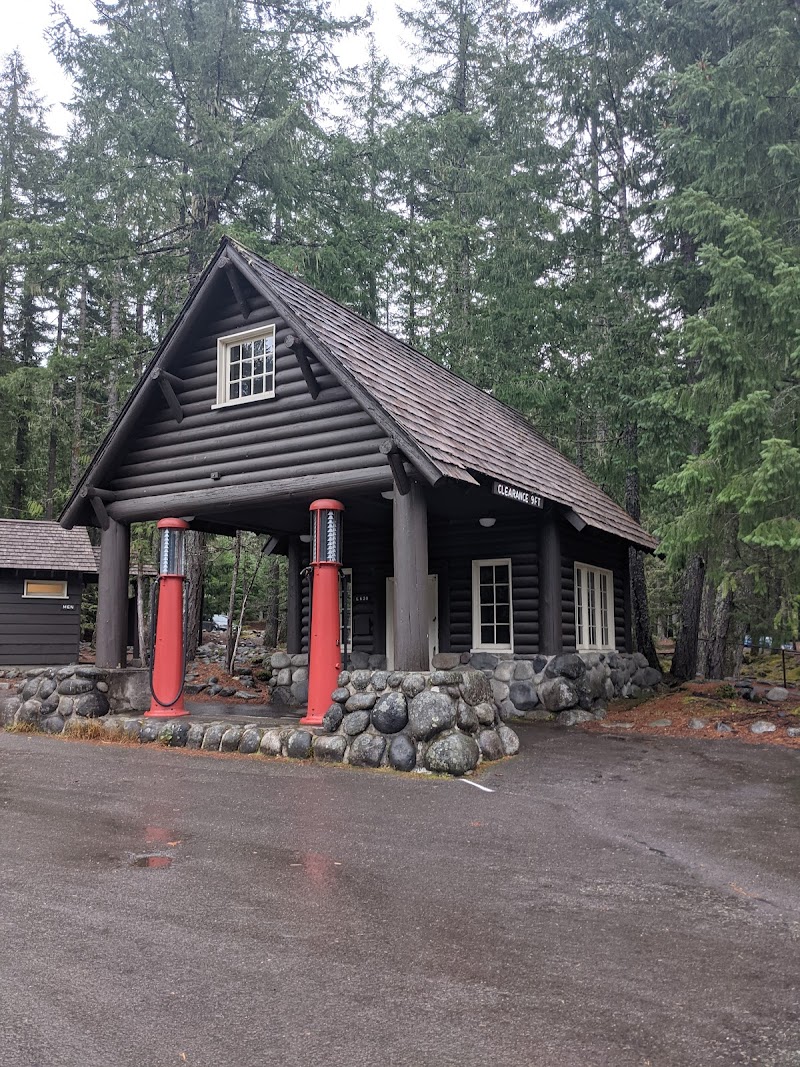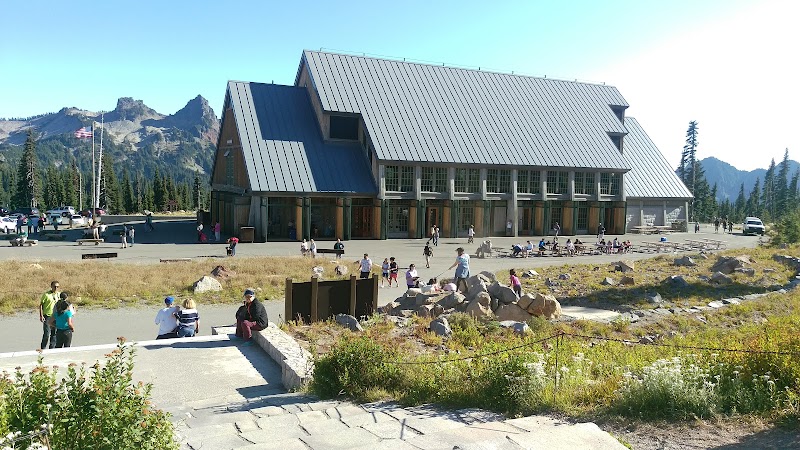Introduction
Are you aware that Mount Rainier National Park boasts the most glaciated peak in the contiguous United States? This extraordinary park, a haven for nature lovers, captivates visitors with its mesmerizing waterfalls, wildflower meadows, and ancient forests. The park's primary attractions, including the awe-inspiring Mount Rainier itself, are sights that will forever imprint themselves in your heart.
Embarking on a journey to Mount Rainier National Park is akin to embarking on an unforgettable adventure. Possessing a detailed tourist map is like holding the key to this magical realm. It becomes an indispensable tool that allows you to effectively plan your trip, ensuring you don't overlook the park's most captivating spots and the exhilarating experiences they offer.
Booking.comExploring the Wonders of Mount Rainier National Park
Stepping foot in Mount Rainier National Park, you're entering a world abounding with unique natural attractions providing an array of awe-inspiring experiences. From exploring vast subalpine meadows to traversing the historic Wonderland Trail, the park's varied landscapes promise an unforgettable journey.
Discover the Breathtaking Subalpine Meadows
While the park's ancient forests and sparkling waterfalls are undeniably enchanting, your journey isn't complete without a visit to Mount Rainier's subalpine meadows. These expanses, frequently adorned with vibrant wildflowers in summer, offer some of the most mesmerizing views of Mount Rainier. The aptly named Paradise is the most visited area of the park, featuring lush meadows that provide a stark contrast to the icy facade of the mountain.
Step Back in Time on the Wonderland Trail
For those with an adventurous spirit, the historic Wonderland Trail offers a captivating journey through the park's diverse ecosystems. This 93-mile loop encircles the glaciated peak of Mount Rainier, offering hikers a unique perspective of the park's varied landscapes. As you navigate the trail, you might come across remnants from the past, such as the Indian Henry's Hunting Ground, a testament to the park's rich history.
Experience the Majesty of Mount Rainier's Glaciers
To truly comprehend the immense scale of Mount Rainier, journey to the park's resident glaciers. The Emmons Glacier, the largest glacier in the continental United States, is nothing short of spectacular. Its sprawling icy expanse, marked by deep crevasses and ice pinnacles, provides a striking contrast to the lush meadows and forests that constitute much of the park. While you're there, don't miss the chance to visit the nearby Sunrise Visitor Center, a treasure trove of insights about the park's glacial history.
Unearth the Secrets of Mount Rainier's Ancient Forests
As you delve into the park's ancient forests, you'll uncover a different side of Mount Rainier. The Grove of the Patriarchs, a sanctuary of old-growth trees, stands as a living testament to the enduring power of nature. Some of the towering Douglas firs, Western hemlocks, and Western red cedars here are over 1,000 years old, their massive trunks and sprawling roots weaving a tale of resilience and survival. This timeless forest serves as a reminder of the park's ancient past, a stark contrast to the ever-changing landscapes that surround it.
Stargazing in the Park: A Night to Remember
When night falls over Mount Rainier National Park, a whole new world of wonder comes alive. On a clear night, the park's remote location makes it an exceptional spot for stargazing. The Milky Way, sprawling across the inky sky, is a sight not to be missed. For an even more immersive experience, consider joining one of the park's ranger-led astronomy programs, where you can learn more about the celestial bodies that illuminate the night.
As you can see, Mount Rainier National Park offers more than meets the eye. To make the most of your visit, consider using a tourist map of the United States. This will ensure you don't miss out on any of the park's hidden gems, offering a comprehensive and enriching experience of this unique natural wonderland.
If you're interested in exploring more such mesmerizing parks, check out the Rocky Mountain National Park tourist map and the Glacier Bay National Park tourist map for a richer travel experience.

Practical Information for Visiting Mount Rainier National Park
Transportation and Mobility
Getting around Mount Rainier National Park is straightforward, but it requires some planning. Free shuttle buses operate from late June to early September, providing a convenient solution for visitors to navigate the park without their own vehicles. The shuttle route includes key visitor centers, campgrounds, and trailheads, with buses typically running every hour.
For those who prefer to drive, road conditions can change rapidly due to weather and maintenance work, so it's crucial to check the park's official website for the latest updates before setting off. Remember that some roads, such as the road to Sunrise, are only open seasonally.
Schedules and Prices
Mount Rainier National Park operates year-round, but individual facilities and services may have varying operational hours depending on the season. The visitor centers and ranger stations have specific hours, so be sure to check the official website for the most accurate information.
As for the entrance fees, individuals are charged $15, while a vehicle pass costs $30 and is valid for seven consecutive days. For frequent visitors, the annual pass, priced at $55, offers unlimited entry for one year.
Safety Tips
As the park is home to diverse wildlife, it is essential to respect nature and take precautions. Never feed animals and maintain a safe distance, especially from larger mammals such as elk and bears. Moreover, make sure to store food and dispose of waste properly to avoid attracting wildlife to populated areas.
Also, always be prepared for changing weather conditions. Mount Rainier's high elevation can mean sudden temperature drops and unexpected storms, even in summer. Pack layers and always carry rain gear.
Practical Recommendations
When planning your visit, consider the season as it greatly impacts what areas of the park are accessible and what activities are available. Spring and early summer are ideal for viewing waterfalls, while late summer offers spectacular wildflower displays in the meadows.
Lastly, remember to pack out everything you bring into the park, including trash, to keep this magnificent place pristine for future generations. It's not just a recommendation—it's a requirement.

Frequently Asked Questions about Mount Rainier National Park
1. Can I bring my pet to Mount Rainier National Park?
While pets are allowed in the park, their access is quite restricted. They are only permitted in parking lots, campgrounds, and on paved roads. Pets must be on a leash at all times and are not allowed on trails or in wilderness and/or off-trail areas. You must also ensure that you clean up after your pet.
2. Are there any unique activities for children in the park?
The park offers a Junior Ranger Program that's both educational and fun for younger visitors. Children can learn about the park's ecology, history, and wildlife in an engaging way. There are also several family-friendly hikes and nature walks suitable for all ages.
3. What are the options for overnight stays within the park?
Within the park, you have a few options for overnight stays. You can choose between camping in one of the park's campsites or staying at the historic Paradise Inn or National Park Inn. Remember to book well in advance, especially during peak summer months.
4. What precautions should I take when driving in the park?
Winter driving at Mount Rainier can be challenging due to snow and ice. Always check the park's website for current road conditions before you visit. During winter, vehicles are required to carry tire chains, and they must be installed on vehicles when necessary.
5. Are there guided tours available in the park?
Yes, Mount Rainier National Park offers ranger-led programs that provide comprehensive information about the park's natural and cultural history. Schedule and availability may vary, so it's recommended to check the park's official website for the most accurate information.
6. Can I fish in the park?
Yes, fishing is permitted in the park's rivers and lakes, provided you adhere to state regulations. However, keep in mind that many water bodies in the park are fed by glacial runoff and may not be suitable for fishing due to cold temperatures.

